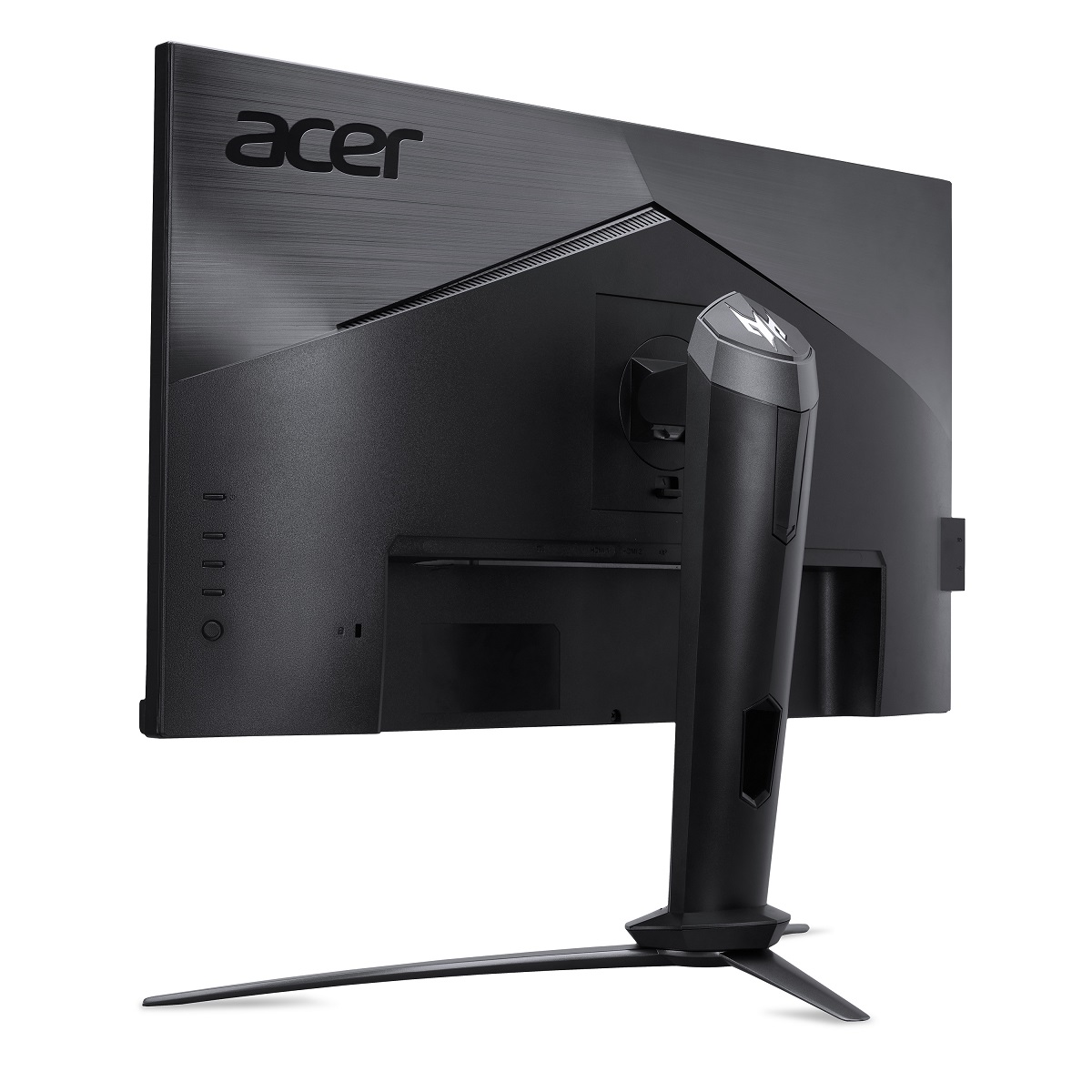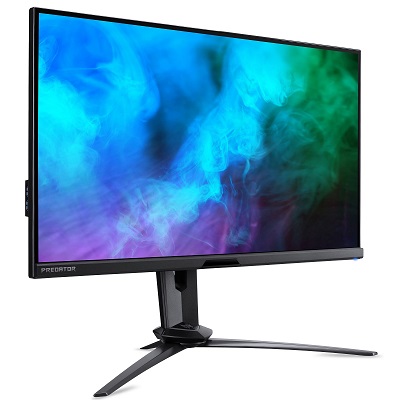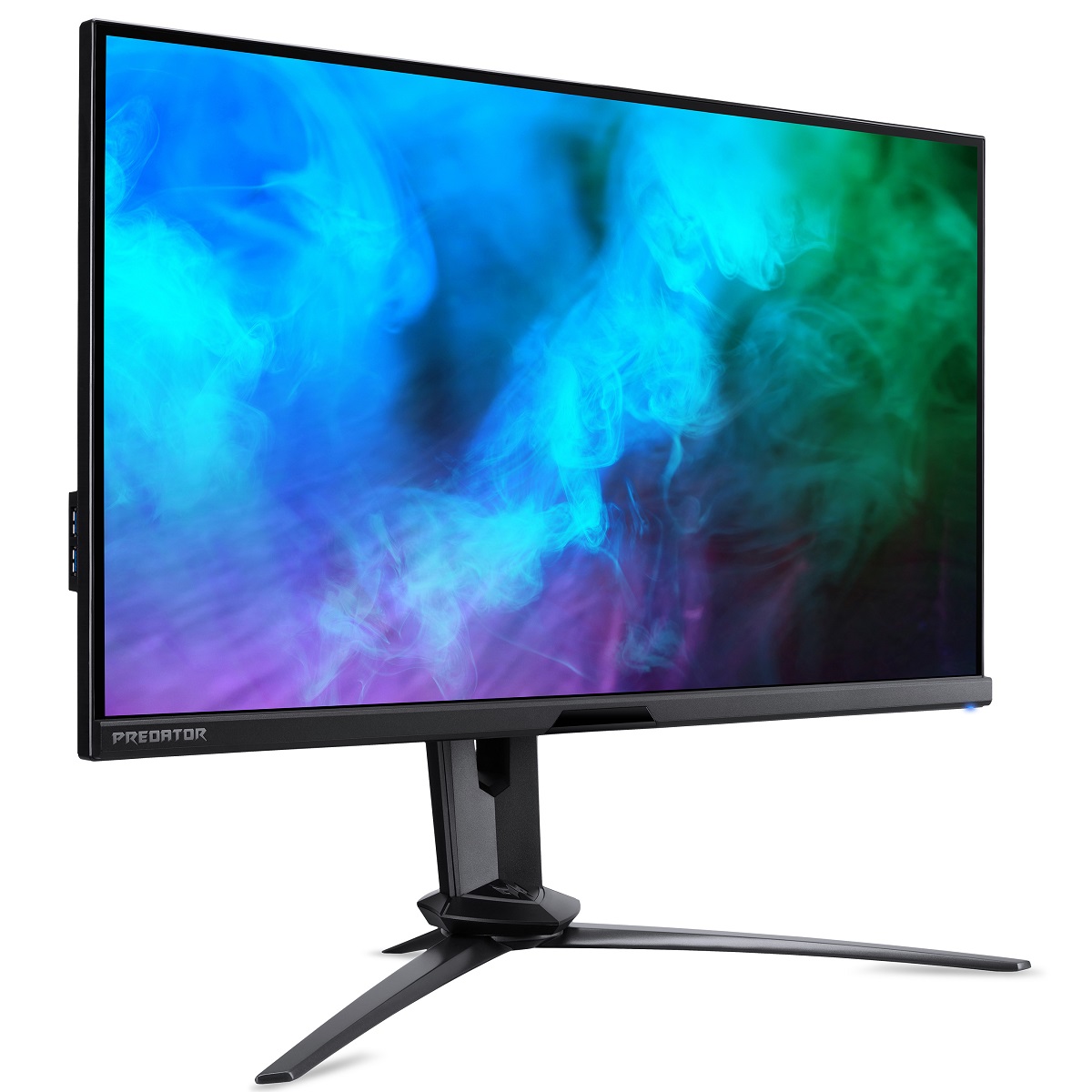Acer X28 152Hz 4K IPS with G-SYNC
As an Amazon Associate I earn from qualifying purchases made using the “Buy” button at the bottom of this post. Where possible, you'll be redirected to your nearest store. Further information on supporting our work.With the graphical capabilities of modern GPUs (if you can get hold of one for a reasonable price), there’s a lot of interest in a combination of high refresh rate and high resolution. The Acer X28 combines the ‘4K’ UHD resolution with a 155Hz refresh rate and G-SYNC capability. As a member of the Predator series, it’s squarely aimed at gaming and has a design to match. A tripod-style powder-coated metal stand base and angular look overall gives quite an aggressive appearance to the screen. The top and side bezels are dual-stage, with a slim panel border flush with the rest of the screen. And a slim hard plastic outer component. The bottom bezel is bulkier and includes a central sensor suite used for Acer’s ‘VisionCare 3.0’ functionality. This includes a proximity sensor (‘ProxiSense’) which dims the screen then shuts it off if nobody is detected. ‘LightSense’ which allows the monitor to adjust brightness according to room lighting and ‘ColourSense’ which does the same with colour temperature. The OSD (On Screen Display) is controlled by buttons and a joystick at the rear of the screen, running down the right side as viewed from the front.
The monitor uses a 28″ 3840 x 2160 (‘4K’ UHD) IPS-type panel from Innolux (M280DCA family). This panel is 144Hz native, whilst the monitor includes a factory overclock to 152Hz. A G-SYNC module gives ‘full fat G-SYNC’ support, including seamless support of all refresh rates and variable overdrive to potentially improve overshoot handling as refresh rate decreases. Other aspects of note include a 1000:1 static contrast ratio, 178° horizontal and vertical viewing angles and the use of a light to very light matte anti-glare screen surface. A flicker-free WLED backlight offers 90% DCI-P3 colour space coverage for an extra dose of vibrancy and a 300 cd/m² typical maximum luminance. This boosts to 400 cd/m² for HDR10 content, with the monitor offering VESA DisplayHDR 400 support. This is a basic level that doesn’t mandate local dimming or a particularly high brightness by HDR standards, but still allows 10-bit colour to be used (the monitor supports 8-bit + FRC) and the fairly generous colour gamut to be put to good use. The monitor includes a factory-calibrated sRGB emulation setting with a claimed DeltaE <1.
With viewing comfort in mind, the screen is ‘Eyesafe’ certified by TÜV Rheinland. This includes a shifting of the blue light peak to less energetic wavelengths and a reduction in the amplitude of the peak. Additional Low Blue Light (LBL) settings are included to further enhance blue light reduction. A 1ms grey to grey response time is specified (take with a pinch of salt), whilst a competitive-gaming focused ‘G-SYNC Esports mode’ is included. Reflex Latency Analyzer is also supported, allowing users with compatible hardware to get an accurate idea of overall system latency. The included stand attaches centrally using a quick-release mechanism. A flip-down headphone hook is included towards the top of the stand neck and a cable-tidy loop towards the bottom. Removing the stand reveals 100 x 100mm VESA holes for alternative mounting. The stand offers tilt, swivel, height and possibly pivot adjustment. The ports mainly face downwards and include; DC power input (external ‘power brick’) 2 HDMI 2.0 ports, DP 1.4, 3.5mm audio output and 4 USB ports (1 x 2.0, 3 x 3.0) plus upstream. 2 of these USB ports are found at the left side of the screen, as viewed from the front, for easy access. 2 x 2W speakers are included, too.

Further details can be found on the this press release. The monitor is listed for ~$1000 USD.


